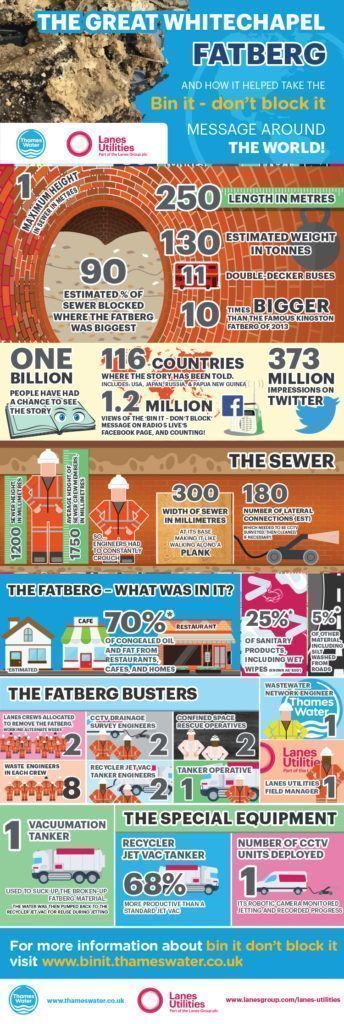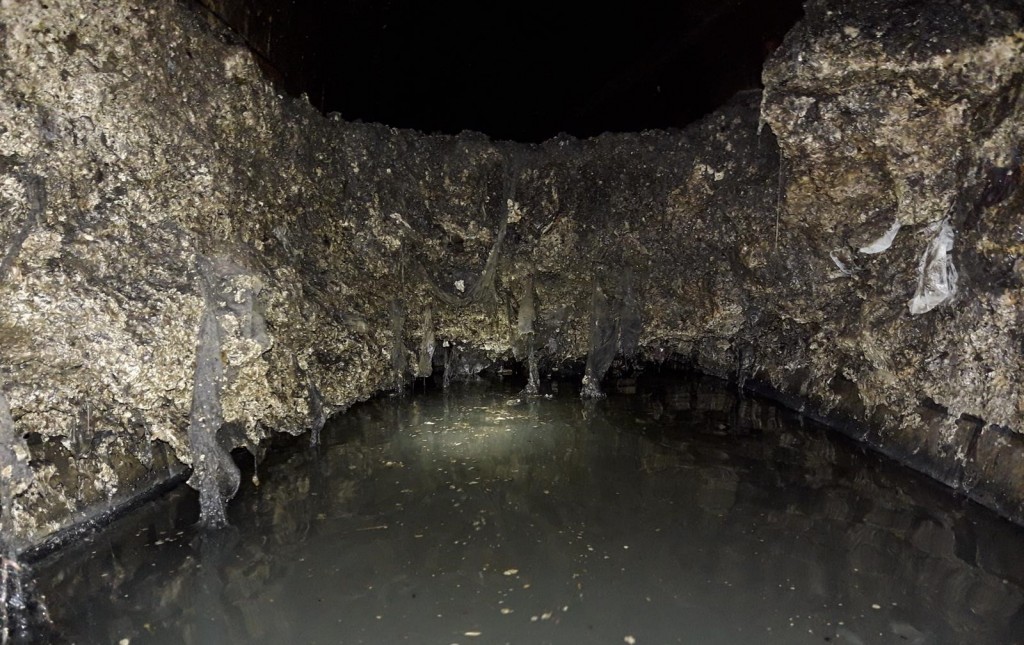Fatberg removal and cleaning
Specialist drainage engineers from Lanes for Drains work around the clock to remove and clean fatbergs from the UK’s drain and sewer systems.
With our nationwide network of depots, we have engineeers and specialist equipment available 24 hours a day, seven days a week to tackle fatbergs, wherever they are found. And, being experienced, we remove them with minimum fuss and minimum disruption. Through Lanes Utilities, we worked on the legendary Whitechapel Fatberg, which is a story in itself. In fact some of the 130-tonne monster ‘berg became an exhibit in the Museum of London.
In fact we deal with 400-600 fatberg-related drainage issues every month, so we know exactly what we’re doing when it comes to fatberg excavation.
For more information about our expert fatberg removal and cleaning services, call 0800 526 488 or use our online enquiry form.
What is a fatberg?
So what exactly is a fatberg; this thing in the sewers that causes problems for people and businesses across the land, and takes up so much of our time and resources?
We’ll tell you everything you need to know about fatbergs and how to avoid creating them.
What does ‘fatberg’ mean?
As you may expect, a fatberg is the sewer equivalent of an iceberg, and refers to a congealed mass which includes any or all of the following:
- Fats
- Oils
- Grease
- Sanitary products
- Wet wipes
- Condoms
- Cotton buds
- Nappies and pads
- Bandages and plasters
- Medicines
- Razor blades
- any other items which should not be in a drain
As the fatberg accumulates more and more material and matter, including sewage, the mass solidifies and gets stuck in the pipe, gradually blocking it. Ultimately it means the drain or sewer ceases to operate effectively, leading to foul waste flooding and pollution in the local environment.
Fatbergs may need be to dug out completely, which means major excavation works on the streets and inconvenience all round.
How does a fatberg develop?
Fatbergs are caused by people putting any of the items listed above into their drains or down the toilet. Sewers and drains are intended for sewage waste ONLY.
To avoid creating a fatberg, just follow these three simple practices:
- Never, ever pour fats, oils and grease (FOG) down the sink or toilet
- Clear all food waste — even crumbs — into the bin, rather than washing it down the sink.
- Stick with the *3 Ps. That means you only ever flush PEE, POO and (toilet) PAPER down the toilet. Anything else goes in the general waste bin.
How to get rid of a fatberg?
We use powerful, state-of-the-art equipment to get fatbergs out of the drains and sewers.
First we have to break the fatberg up into smaller chunks. To do this, we use special water jets which process 10-gallons-per-minute, at a pressure of 3,000psi.
The broken up fatberg pieces are then removed from the pipe by manual excavation, powerful vacuumation tanker units, or a combination of both.
The Thames Water ‘monster’ fatberg
In 2017, Lanes for Drains worked with Thames Water to remove the biggest fatberg ever discovered from the sewers beneath Whitechapel in London.
The London fatberg took nine weeks to excavate, was 250 metres long (the length of 11 double-decker buses) and weighed 130 tonnes

Lanes for Drains Fatberg Fighters
To educate the public about fatbergs and how to avoid them, Lanes for Drains has worked with primary schools around the country to enlist pupils as certified ‘Fatberg Fighters’.
For more information about these lessons, visit our educational resources section.
Contact us today
If you would like to know more about fatbergs or need us to help remove a fatberg, get in touch with our team of experts today. Call 0800 526 488 or use our online enquiry form.










